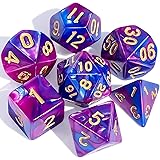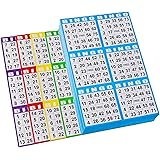Unpacking the Casino Edge: How Blackjack is Stacked Against You
Many Blackjack players share a common sentiment: sometimes, the game just feels rigged. You’ve likely experienced a string of bad luck that makes you question the fairness of it all. The video above delves into this very feeling, explaining exactly what casinos do to maintain their advantage and why many popular player strategies ultimately fall short.
It’s not merely a feeling; the game of Blackjack is, by its very design, built to favor the house. Furthermore, casinos actively adjust the rules to solidify this advantage. Understanding these fundamental truths is the first step toward becoming a more informed player, moving beyond mere superstition to grasp the real mechanics at play.
The Inherent House Advantage: Busting First Means Losing
One of the most crucial elements of Blackjack’s design, often overlooked by casual players, is the simple fact that the player acts first. This seemingly minor detail carries significant mathematical weight. If you, as the player, exceed 21 and “bust,” you immediately lose your bet, regardless of what the dealer subsequently draws.
This rule creates a built-in advantage for the casino. Even if the dealer also busts on the same hand, your bet is already gone. This scenario, where both the player and the dealer might bust, is not a push; it’s an automatic loss for the player. This single rule alone shifts the odds noticeably in favor of the house, forming the bedrock of the casino’s profitability in Blackjack.
Casino Rule Manipulations: Shifting the Blackjack Odds
Casinos are not content with just the inherent advantage. They continuously monitor player strategies and adjust rules to further tip the scales. Any rule that might give a savvy player even a slight edge is often limited or entirely removed. This practice ensures the casino’s long-term profitability and discourages professional play.
The Case of Early Surrender
Consider the historic “early surrender” rule once prevalent in Atlantic City. This allowed players to forfeit half their bet before the dealer even checked for Blackjack, a powerful tool for mitigating losses on bad hands. As professional player Tommy Hyland recounted in the video, this rule became so advantageous for a small percentage of informed players that one casino, Resorts, even experienced a losing day. Faced with such a significant threat to their profits, casinos quickly eliminated the early surrender option.
Impact of Payouts and Deck Count
Similarly, the shift from 3:2 Blackjack payouts to 6:5 payouts significantly impacts player returns. A natural Blackjack typically pays 1.5 times your original bet (3:2). However, many tables now offer a stingier 6:5 payout, meaning a $10 bet will return $12 instead of $15. This seemingly small change drastically increases the casino’s edge, effectively punishing players for hitting one of the best hands in the game.
The number of decks used also plays a critical role. Single-deck Blackjack games, historically more favorable to players due to increased predictability, are now rare and often come with unfavorable rules. Casinos understand that fewer decks allow for more accurate card tracking, so they mitigate this by increasing the number of decks or altering other rules to compensate.
Dealer Rules and Player Options
Other seemingly minor rule variations, such as whether the dealer hits or stands on a “soft 17” (an Ace and a 6), also impact the house edge. A dealer standing on a soft 17 is better for the player. Additionally, casinos limit player options like double downs and splits. While doubling down on an 11 against a dealer’s 6 can give the player a substantial 67% advantage on that specific hand, casinos restrict this by only allowing it on the first two cards and for the original bet amount. Some even limit splitting Aces, or allow it but restrict further hitting or doubling, all to reduce player opportunity.
Debunking Ineffective Blackjack Strategies
Many players, frustrated by losses, devise their own strategies or cling to popular myths, hoping to find an edge. However, most of these attempts fail to stand up against the fundamental mathematics of the game. Let’s examine some of these common, yet ultimately losing, approaches.
The “No-Bust” Strategy
One such ill-conceived idea is the “no-bust” strategy, where players refuse to hit any hand that could potentially lead to busting, hoping the dealer will bust instead. As the video highlights, while this might feel logical in the short term, it’s mathematically disastrous. Research shows that employing a “no-bust” strategy leads to losing money eight times faster compared to simply following proper basic strategy. It significantly sacrifices winning opportunities in favor of avoiding a bust, which ultimately results in far greater losses over time.
The Myth of Quitting While Ahead
Another popular strategy is to “quit while you’re ahead.” Players often get up a few bets, feel good, and decide to leave. While it’s true that the odds of being up something like three bets are around 75% at some point, the fallacy lies in believing this strategy guarantees long-term wins. The cards do not “remember” your previous sessions. Each new session, or even each new hand, contributes to the long-run probabilities where the casino’s edge will eventually prevail. Consistently trying to win a small amount each time you visit the casino is statistically impossible; it’s akin to seeking an infinitely long winning streak against fixed odds.
Other Common Misconceptions
Beyond these, various other strategies persist in the gambling world. Progressive betting systems, such as Martingale, where you double your bet after every loss, are seductive but financially dangerous, quickly leading to catastrophic losses as you hit table limits or run out of bankroll. Similarly, beliefs about playing with “quality players,” finding “dealers that are busting,” or not “messing up the flow of the cards” are pure superstitions. The mathematics of Blackjack are indifferent to such factors; each hand is an independent event, largely unaffected by the table’s social dynamics or previous outcomes.
The True “Glitch in the Matrix”: Card Counting
With all these strategies debunked and the house advantage firmly established, it might seem like players are truly helpless. However, as the video alludes, there is a legitimate, legal, and mathematically proven method to gain an advantage in Blackjack: card counting.
Card counting is not about memorizing every card; it’s about tracking the ratio of high cards to low cards remaining in the shoe. When the deck becomes rich in high cards (Tens, Jacks, Queens, Kings, Aces), the player’s odds improve significantly. At these times, a card counter increases their bet, effectively turning the game’s inherent edge against the casino. This skill-based strategy requires discipline, practice, and resilience, as casinos certainly do not favor those who beat them. Nevertheless, it stands as the only consistently effective strategy against the casino’s built-in advantage in Blackjack.











